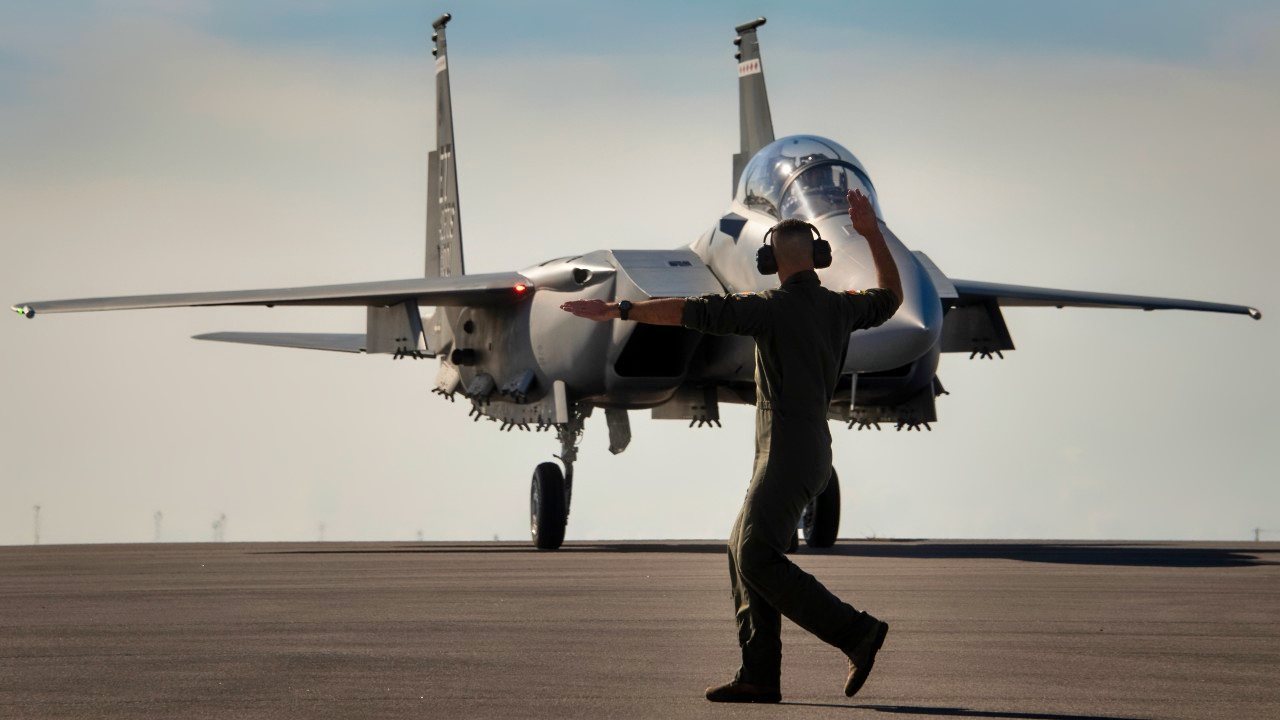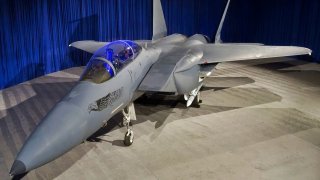A Stealth F-15? Meet Boeing's F-15SE Silent Eagle Fighter
The F-15SE Silent Eagle, introduced in 2010 as a stealth-enhanced version of the F-15, sought to compete with fifth-generation fighters like the F-35.
What You Need to Know: The F-15SE Silent Eagle, introduced in 2010 as a stealth-enhanced version of the F-15, sought to compete with fifth-generation fighters like the F-35.

-With internal conformal weapons bays and a reduced radar signature, it promised a significant upgrade to the fourth-generation F-15. However, despite interest from nations like South Korea and Saudi Arabia, the Silent Eagle was ultimately deemed insufficient for emerging threat environments.
-Its true legacy is seen in the F-15EX Eagle II, which incorporates modernized features from the F-15SE, offering enhanced capabilities and making it a valuable asset to the U.S. Air Force's tactical fleet.
F-15SE Silent Eagle: A Successful Failure?
The term “successful failure” sounds like a total oxymoron, yet it is a very real phenomenon. For example, the late historian Thomas A. Bailey, in his highly renowned textbook” The American Pageant: A History of the Republic,” refers to Christopher Columbus as a “successful failure” because, although he discovered America according to conventional wisdom, whether or not the Norsemen deserve the credit is a discussion for another time and place, he failed in his original objective of finding the Indies.
Meanwhile, the history of military aviation is replete with examples of successful failures. For example, during the Battle of Midway in June 1942, the obsolescent Douglas TBD Devastator torpedo bomber and its crews were absolutely massacred, but their sacrifice provided enough of a diversion that enabled their brother U.S. aviators flying Douglas SBD Dauntless dive bombers to sink three, and eventually four, Imperial Japanese Navy (IJN) aircraft carriers and thus turn the tide of the Pacific Theatre of WWII.
Now, most people would never classify the F-15 Eagle fighter jet as a “successful failure,” but rather as one of the most resoundingly successful warbirds of all time as embodied in its mind-boggling, undefeated 104:0 kill ratio in air-to-air combat. However, there was at least one variant of the Eagle jet that qualifies as a successful failure, because, while it failed in and of itself, it ended up spawning the latest and greatest current variant of the venerable platform. Say hello to the F-15E Silent Eagle.
Early History and Specifications
The Boeing F-15SE made her maiden flight in July 2010, twenty-one years after the two-seater McDonnell Douglas F-15E Strike Eagle and thirty-eight years after the original single-seat F-15 Eagle made their respective debuts. This particular airframe, Air Force Serial No. 86-0183, had started her career as the first production F-15E and thus got to make aviation history a second time when she was modified to become the Silent Eagle flight demonstrator.
The idea behind the Silent Eagle was to enable Boeing to upgrade the fourth Generation F-15 with stealth capabilities to compete with Lockheed Martin’s “Skunk Works” division’s fifth Generation F-35 Lightning II.
The Silent Eagle had the following Gucci (metaphorically speaking) upgraded features:
-Internal conformal weapons bays (CWBs)
-Reduced radar signature
-Removal of 750-gallon conformal fuel tanks from the fighter’s fuselage as a weight-saving measure
So, What Went Wrong?
Sounds great, right? However, according to my colleague Maya Carlin, “Based on these impressive specs, several foreign nations were initially interested in procuring the Silent Eagle variant—including South Korea and Saudi Arabia. Ultimately, however, the aircraft was just not considered capable enough to survive in emerging threat climates.”
F-15SE Silent Eagle: Where Are They Now?
As far as I know, the Silent Eagle flight demonstrator was not preserved for posterity.
If any of our dear readers know otherwise, please let us know and correct me if I’m wrong, thanks in advance.
However, its legacy lives on in the F-15EX Eagle II, which made her maiden flight on February 2, 2021 and officially entered into operational service with the U.S. Air Force this past July. As Boeing proudly states in its info page on the Eagle II, “Ready to fight as soon as it comes off the line, the F-15EX is the most affordable, reliable, and immediate way to refresh the capacity and update the capabilities of tactical fighter fleets…With low operating costs compared to other fighters yet four times the weapons payload and twice the fuel, range, and speed, the F-15EX represents a modern solution that global Air Forces can field within their schedule.”

As Carlin points out, “The F-15EX II does not compromise on the payload for survivability as it can notably shoot farther than any of its counterparts, making it a potential critical asset to the USAF. For this reason, many analysts consider the Eagle II to be an enhanced and modern version of the proposed Silent Eagle fighter.”
Time will tell if the Eagle II proves to be as successful as her predecessor variants.
About the Author:
Christian D. Orr is a Senior Defense Editor for National Security Journal (NSJ). He is a former Air Force Security Forces officer, Federal law enforcement officer, and private military contractor (with assignments worked in Iraq, the United Arab Emirates, Kosovo, Japan, Germany, and the Pentagon). Chris holds a B.A. in International Relations from the University of Southern California (USC) and an M.A. in Intelligence Studies (concentration in Terrorism Studies) from American Military University (AMU). He has also been published in The Daily Torch , The Journal of Intelligence and Cyber Security, and Simple Flying. Last but not least, he is a Companion of the Order of the Naval Order of the United States (NOUS).
Image Credit: Creative Commons and/or Shutterstock.


